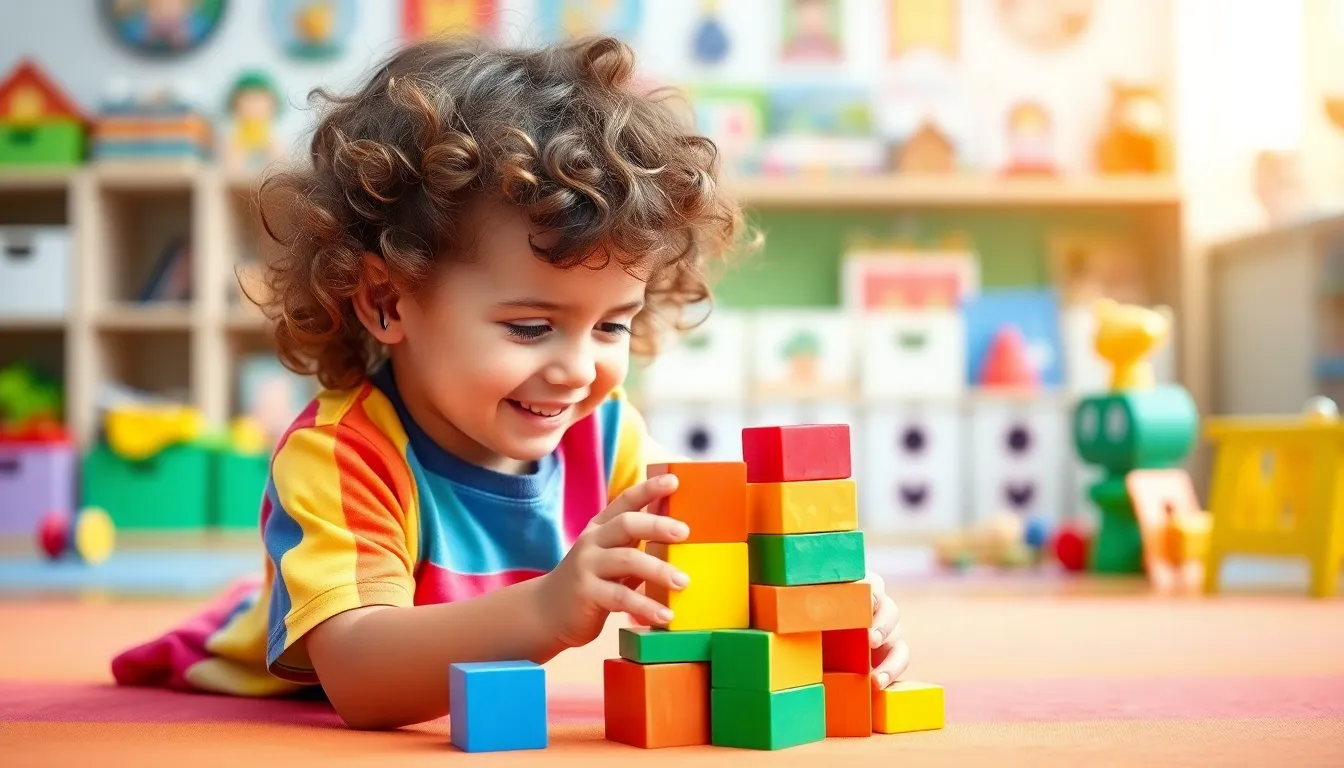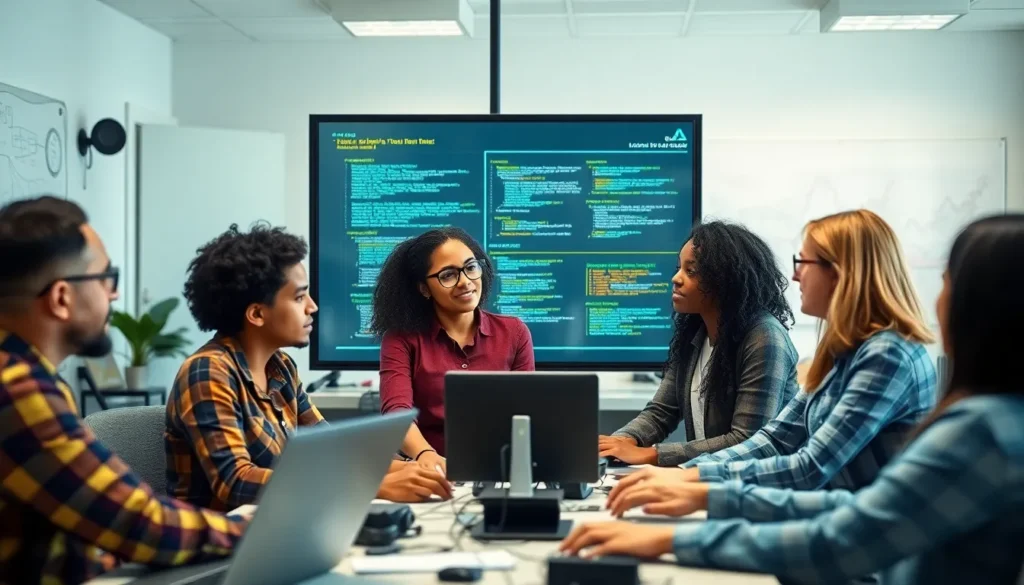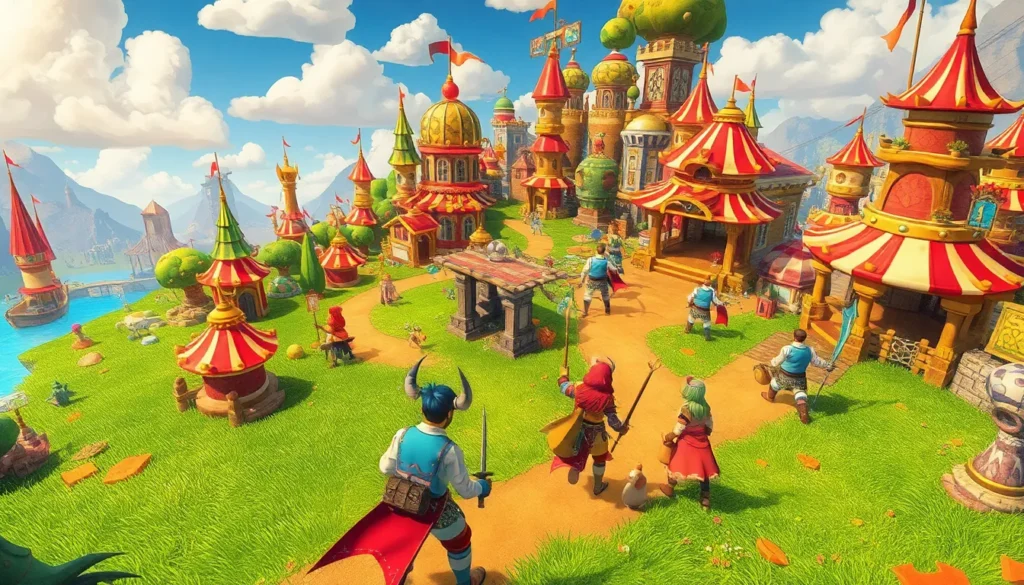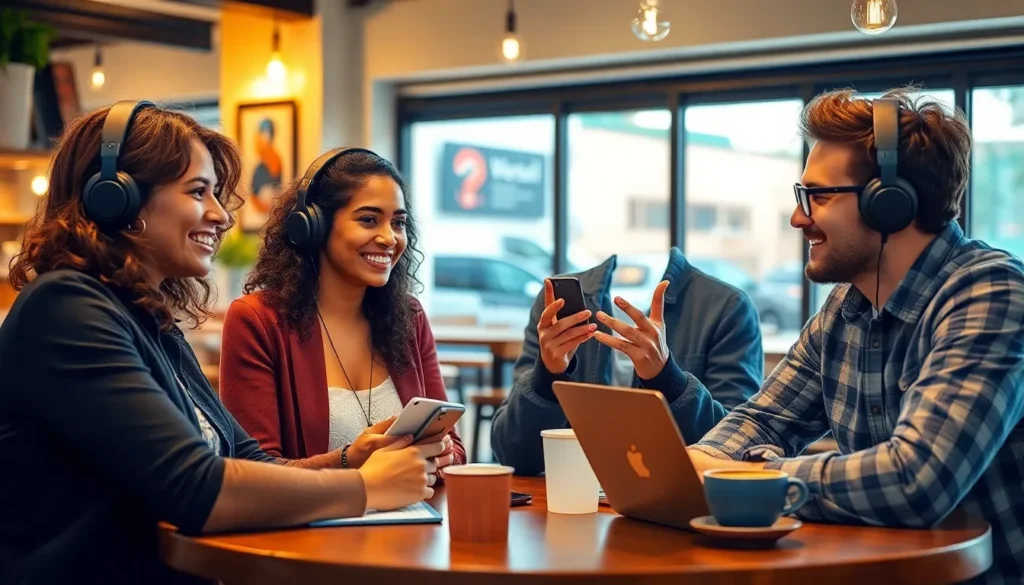Table of Contents
ToggleIn the bustling world of preschool, little ones are busy mastering the art of coordination—one wobbly step at a time. Hand-eye coordination may sound like a fancy term reserved for sports stars, but it’s actually a crucial skill for toddlers. Imagine a tiny Picasso trying to color within the lines or a budding chef attempting to pour juice without creating a mini waterfall. These everyday feats hinge on developing that all-important connection between what they see and how their little hands respond.
As parents and educators, nurturing this skill can be both fun and rewarding. Engaging activities not only spark joy but also lay the foundation for future learning. So, let’s dive into the delightful world of preschool hand-eye coordination and explore why it’s essential for those pint-sized adventurers. After all, who wouldn’t want to witness their child’s triumphant moment of successfully stacking blocks—without turning it into a game of Jenga?
Overview of Preschool Hand-Eye Coordination
Hand-eye coordination significantly impacts preschoolers’ daily activities. This skill involves the ability to synchronize visual input with hand movements. Engaging in activities that promote this coordination is vital for toddlers. Tasks such as coloring, pouring drinks, and stacking blocks enhance this skill effectively.
Fine motor development connects directly with hand-eye coordination. Children benefit from exercises that strengthen their grip and control over objects. Playing with building toys or clay strengthens both dexterity and coordination. Additionally, interactive games that require children to catch balls or toss rings provide real-time practice.
Furthermore, the role of parents and educators remains crucial in this developmental stage. They can encourage children to participate in hands-on activities that naturally incorporate coordination practices. For example, setting up obstacle courses lets preschoolers maneuver around objects while improving their coordination.
Research shows that mastering these skills becomes essential as children prepare for more complex tasks. Those who develop strong hand-eye coordination tend to perform better in academics and sports. Early intervention can make a substantial difference in a child’s physical and cognitive growth, setting a strong foundation for future learning experiences.
Promoting hand-eye coordination doesn’t require formal instruction. Simple home activities can make a significant impact. Allowing children to draw, play with puzzles, and engage in crafts fosters their confidence while refining motor skills.
Importance of Hand-Eye Coordination in Preschoolers
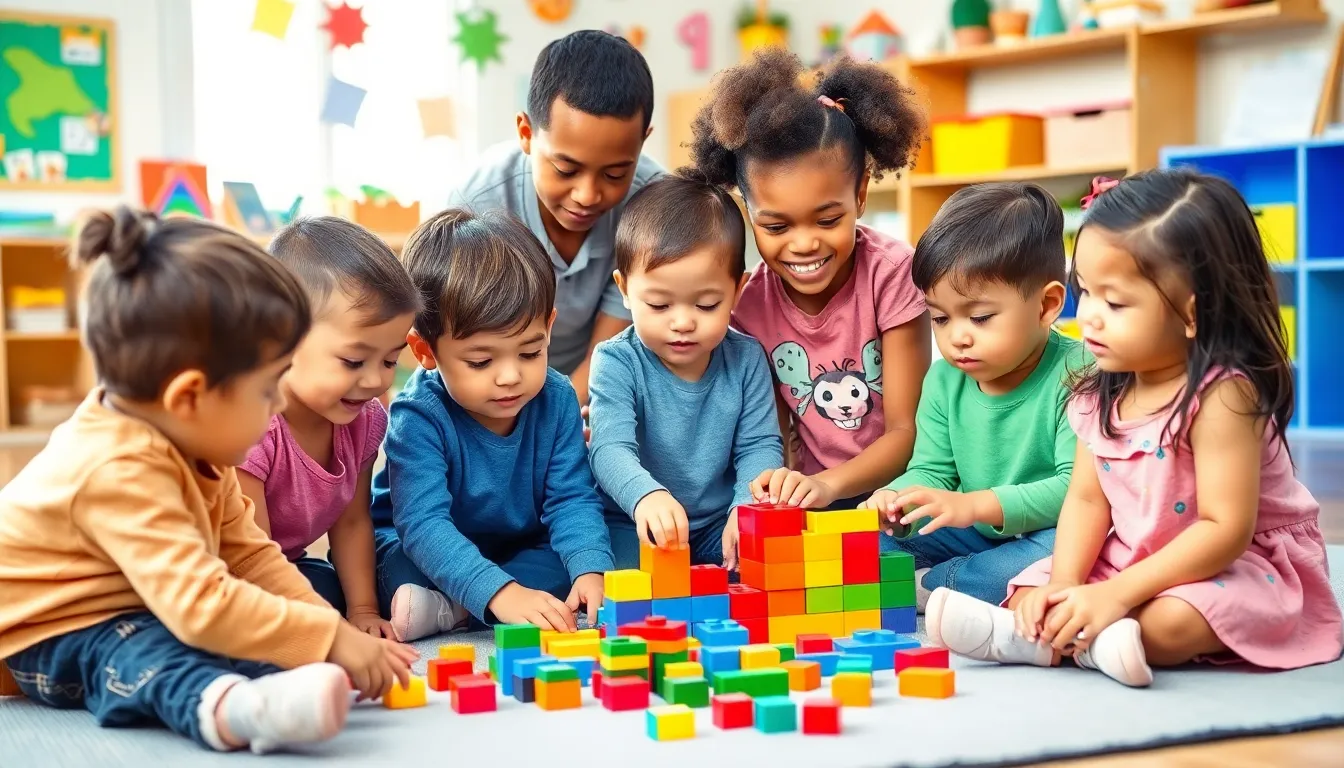
Hand-eye coordination plays a vital role in preschoolers’ growth, impacting various aspects of their lives. Developing this skill fosters effective learning experiences.
Cognitive Development
Cognitive skills flourish when children engage in activities that require hand-eye coordination. Tasks like puzzles and building blocks encourage problem-solving and critical thinking. Understanding spatial relationships also enhances as they manipulate objects. Improved coordination leads to better focus and attention in learning settings. Research shows that strong hand-eye coordination correlates with academic success. Children who master this skill often demonstrate heightened abilities in reading and math. Engaging in coordinated play can significantly boost cognitive outcomes.
Physical Development
Physical growth is closely tied to hand-eye coordination. Skills like catching, throwing, and dribbling contribute to overall fitness. Developing fine motor skills enhances a child’s ability to perform daily tasks independently. Activities such as cutting with scissors or drawing help strengthen hand muscles and coordination. Improved physical skills encourage confidence during play and sport participation. Evidence indicates that strong coordination reduces injury risk during physical activities. Overall, active engagement in various experiences promotes comprehensive physical development in preschoolers.
Activities to Enhance Hand-Eye Coordination
Engaging preschoolers in various activities boosts hand-eye coordination effectively. These experiences not only enhance skills needed for daily tasks but also make learning enjoyable.
Fun Games and Exercises
Encouraging play through structured games significantly benefits coordination. Activities like bean bag toss develop aiming skills. Playing catch with soft balls promotes hand-eye synchronization. Obstacle courses invite children to navigate while executing movements accurately. Using a chalkboard for drawing enhances control over writing instruments. Dancing games also contribute by requiring children to match movements with music, integrating fun and coordination. These playful exercises create vibrant environments for skill development.
Recommended Toys and Tools
Selecting appropriate toys plays a vital role in enhancing coordination. Building blocks encourage children to stack and balance while exercising fine motor skills. Puzzles develop problem-solving abilities alongside hand-eye coordination as children fit pieces together. Clay and playdough facilitate shaping which strengthens hand muscles. Scissors designed for small hands promote cutting skills, essential for everyday tasks. Lastly, interactive learning toys that involve pressing buttons or sliding pieces engage children’s focus while refining their coordination capabilities. Using these toys ensures a comprehensive developmental experience.
Role of Parents and Educators
Parents and educators play a crucial role in nurturing preschoolers’ hand-eye coordination. They can engage children in fun, interactive activities that support skill development.
Tips for Supporting Development at Home
Encouraging playtime with building blocks enhances coordination through manipulating various shapes. Setting up arts and crafts sessions allows children to practice cutting and drawing techniques. Using simple games like hide-and-seek promotes spatial awareness while improving movement control. Selecting age-appropriate puzzles fosters problem-solving abilities alongside coordination skills. Parents can incorporate playful activities like tossing bean bags or rolling balls, creating enjoyable, skill-building experiences. Reinforcing these interactions through praise boosts children’s confidence in their abilities.
Classroom Strategies for Improvement
In classrooms, teachers can introduce guided activities that focus on hand-eye coordination. Designing obstacle courses using everyday materials makes learning engaging while developing balance and movement. Integrating games such as catch or ring toss encourages teamwork and coordination. Classroom centers can feature fine motor skill stations with activities like threading beads or shaping dough. Regularly incorporating physical education classes enhances overall fitness, contributing to improved hand-eye synchronization. Educators provide consistent feedback to students, celebrating achievements to motivate ongoing development.
Fostering hand-eye coordination in preschoolers is vital for their overall development. Engaging in fun and interactive activities not only enhances this skill but also boosts confidence and independence. Parents and educators play a crucial role in creating environments that encourage exploration and learning through play.
By incorporating games and hands-on tasks into daily routines, they can help children build essential skills that will benefit them academically and physically. As preschoolers master these coordination tasks, they lay a strong foundation for future success in various aspects of life. Celebrating these milestones will inspire continued growth and enthusiasm for learning.

